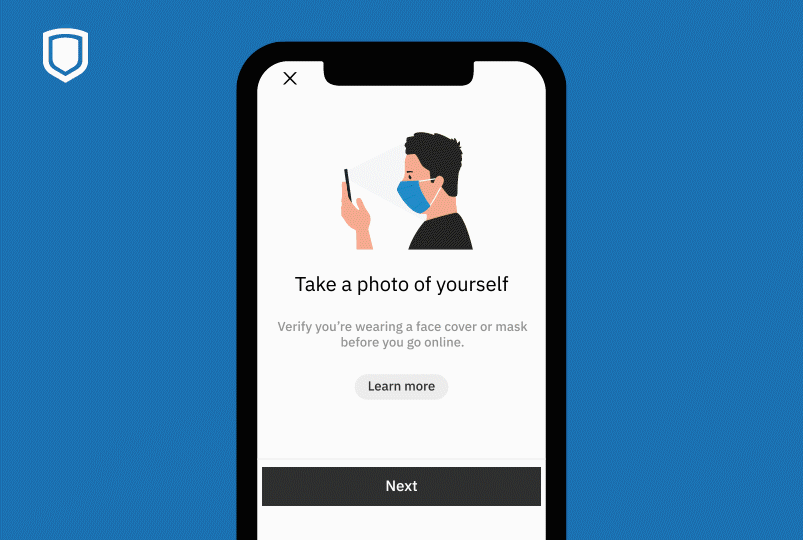The COVID-19 crisis has drastically impacted a lot of industries. It has gotten people to rethink life as they know it. More than people, businesses have been reviewing their strategy, and some, even survival.
The alteration of the business landscape can be attributed to the fact that people have started to rethink necessities, priorities, and luxuries. Transportation that was once considered a necessity has now been pushed a little down the ladder of importance. This transformation traces its origins and people losing the need to commute every day to work. Even the casual trips to malls, movie theaters, pubs, and general travel and tourism have been rendered obsolete temporarily.
The increased demand for transportation in both quantity and quality was a significant catalyst to the ride-hailing industry’s rapid growth. The unprecedented success of businesses like Uber, Lyft, Didi, Grab, and Ola speaks volumes about the business’s relevance until the coronavirus crisis struck them hard.
On the surface, it might seem like a bleak time for any ride-hailing startup. However, now is the best time for any app like Uber to launch into a grand success in the future.
Before we get to the future, let us look at a few ways in which the present has changed. Some businesses like Uber are just relentless. They will go the distance to ensure that their business survives without compromising on the quality of service offered to the people and to the drivers.
The new norms of ride-hailing
There are a few countries in which Uber has started to operate again. However, they have come up with a set of new norms in line with the requirements of the new ‘normal’ life that COVID-19 has imposed.
- The drivers will have to wear a mask. In fact, Uber makes it mandatory by enabling a feature within its app where the drivers will have to upload a selfie with the mask on. An artificial intelligence engine does the job of detection. If a driver is found out not wearing a mask, it does not allow them to start a trip or pick riders.
- The riders, just like drivers, will also be asked to wear a mask. Both parties are encouraged not to engage with each other if they find out that the other one is not wearing a mask.
- The riders will be asked to wash, r sanitize their hands before getting into the cab.
- The riders will always have to occupy the back seat to increase the distance between the driver and the rider. Some cabs have gone ahead to put plexiglass barriers between the driver and the passenger.
- The car’s window will have to stay either partially or fully open, facilitating adequate ventilation and stopping the circulation of air with the car cabin.
- All the carpooling services will be temporarily suspended… For obvious reasons!
Reasons to look forward to the future
In the earlier lines, we were discussing how the future does not look bleak for ride-hailing. There have been pandemics in the past, and although the immediate temporal vicinity had been affected, it did not take a lot of time for the world to return to its normal. There will soon be a time when we will be using every facility like we used to, but with an extra pinch of care and a sense of hygiene.
It would be great for any business if they can capitalize on this intermediate window of rating as this time could present a lot of advantages.
Since the business is bleak, the business owners will not expect a lot to be earned. Since the expectations are relatively low, the focus will not be on money but on building a proper process that focuses on customer satisfaction. If the business owner can go a step ahead, they might end up innovating the entire landscape of ride-hailing with novel ideas. In the services industry, no one can claim to have reached the pinnacle because there is always room for improvement in terms of better customer satisfaction, if not anything else!
This would mean that it is an ideal testing ground for new ideas. You can test your ideas without any losses, and it can help you learn a lot about the market, the expectations, and the way you will need to position your services. It might not have been possible if not for this global pandemic because the competition was cutthroat, and there was no room to experiment and lose!
The hangover of this pandemic will hover around for a while. There’s a great possibility that people might have certain apprehensions in using public transport when everything bounces back. They will always want to opt for a means of private transport with an enhanced sense of hygiene. This could be a big boosting factor for the ride-hailing business after the COVID-19 crisis is over.
The COVID-19 pandemic has delivered a destructive blow to the global economy. The earning capacity of people has drastically decreased. This would mean that the possibility of car ownership is quite low in the future. In the United States, even before the pandemic, there was a drastic drop in the number of people applying for driving licenses and new cars. When the millennials have been fixated to the thought process of using a service only when it is needed, the possibility of a ride-hailing up business finding success in the post-COVID era is extremely high.

Building a ride-hailing app
The ride-hailing app ecosystem is made of three distinct apps – one for the rider, one for the driver, and one for the administrator.
- The rider app should facilitate easy registration by using either an email or a phone number or legacy logins like Google and Facebook.
- They should be able to book a cab without any hassle, with as minimal steps as possible.
- They should be able to make their payments using multiple payment methods for which your app should partner with a versatile payment gateway.
- They should be able to review and rate the driver based on their experience.
- The driver should also be able to register themselves and their cab for the ride-hailing service quickly. However, the registration process for drivers should also include a stage for verifying and authenticating their identity.
- They should be able to choose their availability as they are gig workers and not employees.
- They should be able to quickly realize their payments to their bank accounts, and it plays a major role in building the credibility of the business among drivers.
- Piggybacking on the previous point, there should be a referral bonus for drivers when they refer to other drivers.
- Just like how users get a chance to rate the drivers, the drivers should also be able to rate users based on their behavior.
- To entice drivers, that can be a few additional features like giving their last trip towards their home location, giving them opportunities to enhance their skills through learning opportunities, and recognizing goodwill on a monetary basis.
- The administrator will function like an all-seeing eye for the app. They are responsible for maintaining the contents and the promotions on the app.
- They should be given access to a dashboard that provides data on all the vital statistics, including the number of active drivers, the total number of trips taken, the total earnings, and drivers’ earnings.
- They should be given the power to suspend or disable drivers or riders on account of malicious behavior.
- They are, overall, responsible for upkeeping the sanity and sanctity of the app.
Conclusion
Considering how lucrative the future is, now might be the right time for an aspiring entrepreneur to embark on a journey exploring the space of on-demand ride-hailing business. As a ride-hailing startup, the first thing that needs to be done in this regard is the development of an app like Uber.
It might be quite a cumbersome and daunting task if you were to build the app from scratch either by assembling your team of developers or by partnering with an app development company. Alternatively, you can consider using white label clones of an app like Uber. These white label solutions are straightforward to customize, and they do not cost a lot, but in terms of time and money. They enable launching your app at the earliest, and even during this time, time is of crucial importance.
All you need to do is get in touch with an app development company that specializes in the development and customization of white label Uber Clone. They will take care to understand your requirements, customize your app in line with those, and resent the app to you, so you can start hailing profits and success for your business.












